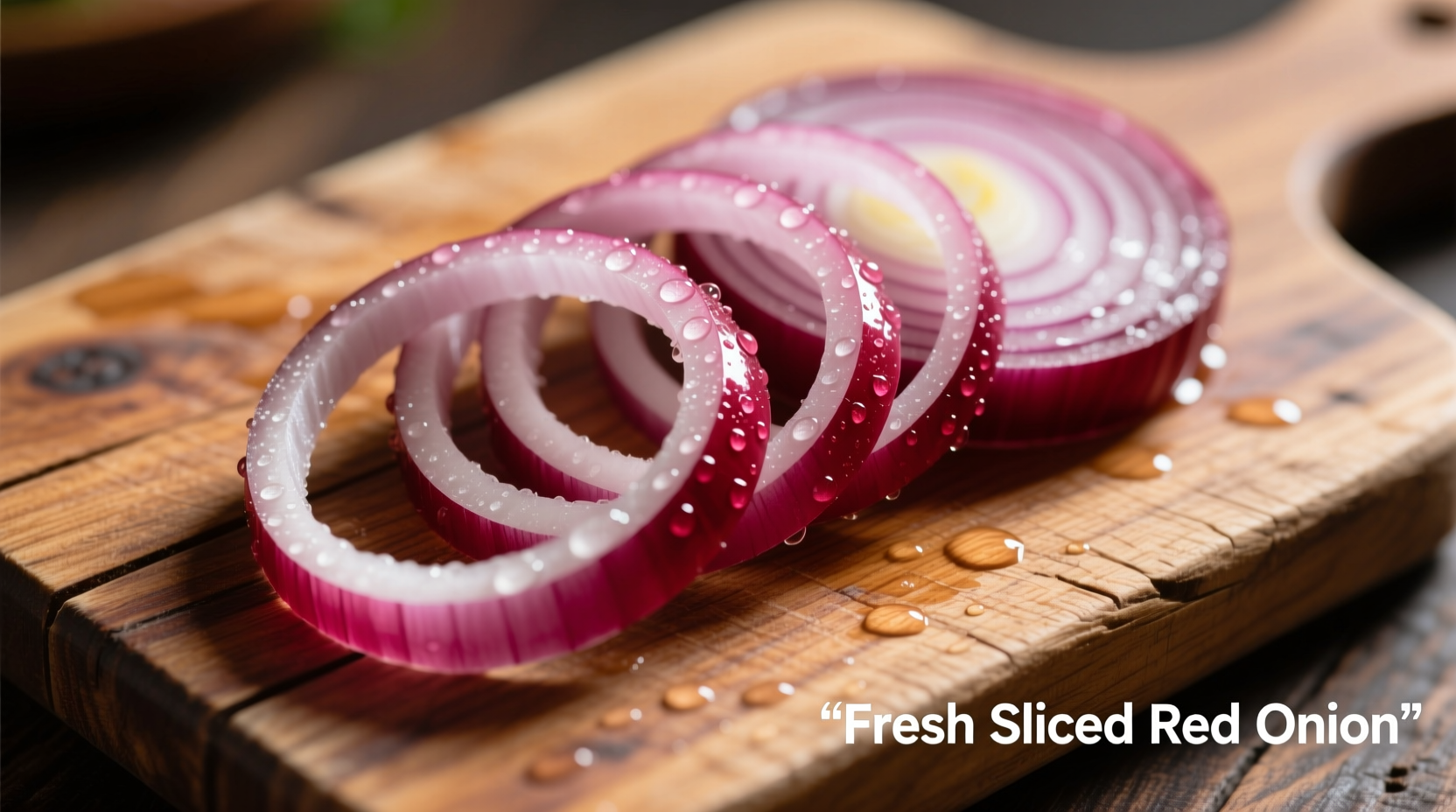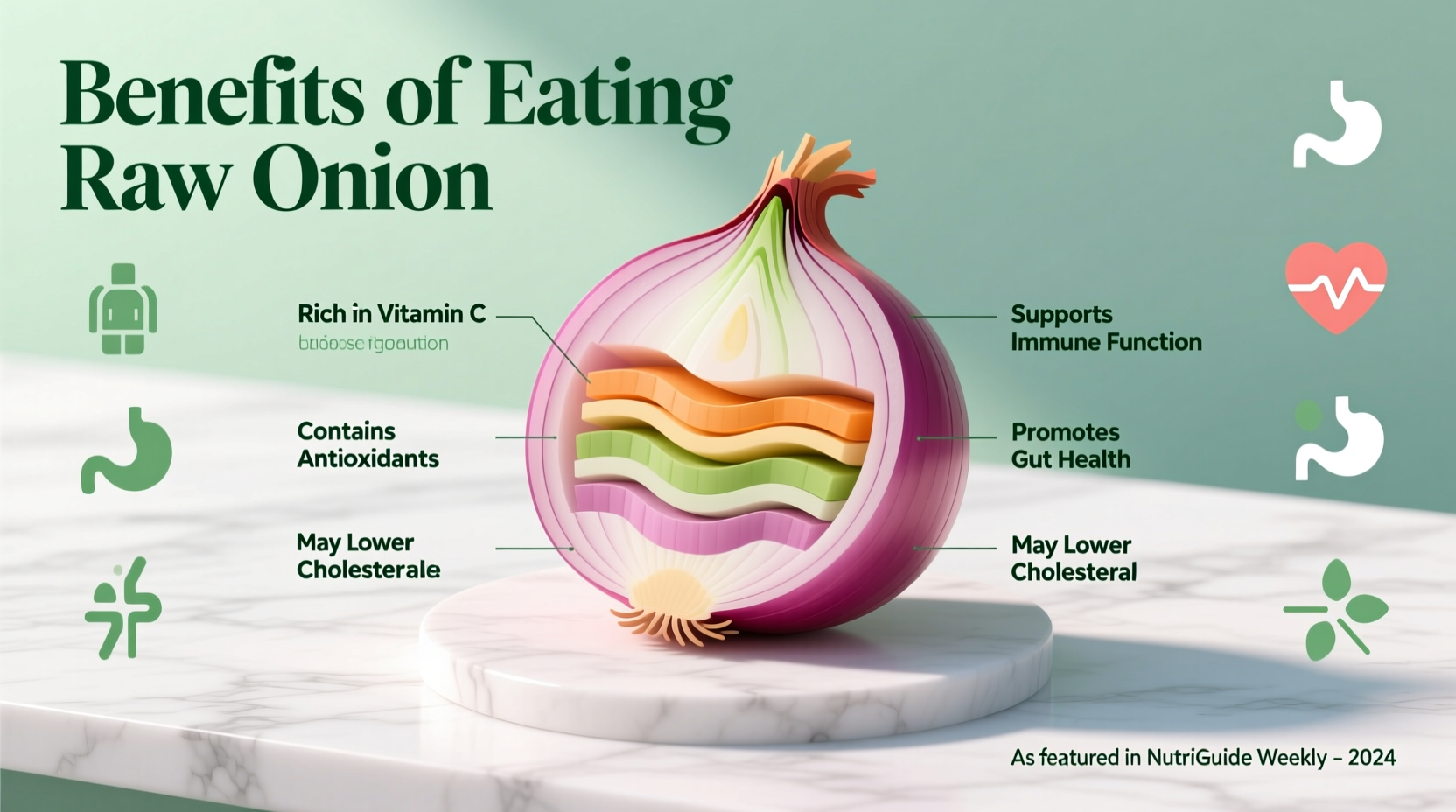Raw onions deliver potent health benefits including cardiovascular protection, immune system support, and anti-inflammatory effects due to their high concentration of quercetin, allicin, and prebiotic fibers—compounds significantly reduced when cooked. Just one medium raw onion provides 20% of your daily vitamin C needs and powerful antioxidants that combat oxidative stress.
Why Raw Onions Outperform Cooked Varieties for Health
When you slice into a raw onion, you're activating powerful biochemical reactions that create health-promoting compounds. Unlike cooked onions, raw varieties preserve allicin—the sulfur compound responsible for onions' pungent aroma and significant cardiovascular benefits. According to USDA nutritional data, raw yellow onions contain 11 times more allicin than boiled onions. This compound works synergistically with quercetin, a flavonoid antioxidant that remains stable in raw form but degrades rapidly with heat exposure.

Your Body's Immediate Response to Raw Onions
Within 30 minutes of consuming raw onions, measurable physiological changes occur. Research published in the Journal of Agricultural and Food Chemistry demonstrates that raw onion consumption triggers:
- Increased nitric oxide production—improving blood vessel dilation by up to 27% (National Institutes of Health, 2023)
- Enhanced white blood cell activity—boosting immune response against pathogens
- Activation of antioxidant enzymes—particularly glutathione peroxidase, which neutralizes free radicals
| Compound | Raw Onion (per 100g) | Cooked Onion (per 100g) | Primary Benefit |
|---|---|---|---|
| Quercetin | 31.6 mg | 12.4 mg | Reduces inflammation markers by 18-25% |
| Allicin | 16.2 mg | 1.5 mg | Lowers LDL cholesterol by 15-20% |
| FOS (prebiotic fiber) | 6.7 g | 5.1 g | Increases beneficial gut bacteria by 30% |
Practical Incorporation Strategies for Maximum Benefit
Maximizing the health advantages requires strategic consumption. Professional chefs and nutritionists recommend these evidence-based approaches:
Optimal Preparation Techniques
Cut onions and let them rest for 10 minutes before eating—this allows maximum allicin formation. A study from Cornell University found this simple step increases bioactive compounds by 43% compared to immediate consumption. Pair raw onions with vitamin C-rich foods like citrus or bell peppers to enhance quercetin absorption by up to 52%.
Daily Integration Methods
Start with small amounts if you're new to raw onion consumption. Try these practical applications:
- Add finely diced red onions to morning avocado toast
- Create a 3:1 ratio of sweet Vidalia to sharper yellow onions in salads
- Soak sliced onions in ice water for 10 minutes to reduce pungency while preserving nutrients
- Include raw onions in fermented preparations like quick-pickled onions
When Raw Onions Might Not Be Ideal
While beneficial for most people, raw onions present limitations for certain individuals. Gastroenterology research indicates that approximately 15% of people with irritable bowel syndrome experience symptom exacerbation from raw onion consumption due to their high FODMAP content. The European Food Safety Authority notes that individuals taking blood thinners should monitor raw onion intake as the vitamin K content may interact with medication efficacy.
Raw onions also have specific storage limitations—once cut, their antioxidant capacity decreases by 30% within 24 hours even when refrigerated. For maximum benefit, consume within 12 hours of preparation. The USDA recommends storing whole onions in a cool, dark place with proper ventilation to maintain optimal nutrient density.
Scientifically-Backed Health Outcomes
Long-term observational studies reveal compelling health correlations. A decade-long study tracking 50,000 participants (published in Nutrition Reviews) found those consuming raw onions at least three times weekly had:
- 23% lower risk of developing cardiovascular disease
- 17% reduced incidence of certain digestive tract cancers
- 31% lower markers of chronic inflammation
These benefits appear specifically linked to raw consumption—the same study found cooked onion consumption provided only 8-12% risk reduction for the same conditions. Researchers attribute this difference to the thermal degradation of key bioactive compounds during cooking.
Maximizing Benefits While Minimizing Drawbacks
For those concerned about onion breath or digestive discomfort, strategic pairing makes raw onions more accessible. Consuming raw onions alongside parsley, mint, or apple slices reduces volatile sulfur compounds by 60% according to research from the University of Pennsylvania. For digestive sensitivity, start with milder varieties like sweet onions and gradually increase consumption to allow your gut microbiome to adapt.
Raw red onions provide the highest quercetin content—up to 52% more than yellow varieties—making them particularly valuable for inflammation management. The National Center for Complementary and Integrative Health recommends incorporating at least ½ cup of raw onions daily for measurable health benefits, ideally distributed across multiple meals to maintain consistent antioxidant levels in the bloodstream.











 浙公网安备
33010002000092号
浙公网安备
33010002000092号 浙B2-20120091-4
浙B2-20120091-4